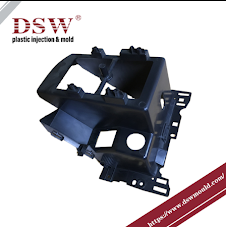The Evolution and Impact of Plastic Moulds
Plastic moulding has revolutionized manufacturing across
industries, enabling the production of intricate and precise components with
remarkable efficiency and cost-effectiveness. At the heart of this
transformative process lies plastic moulds, essential tools that shape molten
plastic into a myriad of forms. we delve into the evolution, applications, and
impact of plastic moulds, tracing their journey from rudimentary beginnings to
cutting-edge technology.
The
Evolution of Plastic Moulds:
The history of plastic moulding can be traced back to the
mid-19th century, with the advent of celluloid, the first synthetic polymer.
Initially, moulds were simple, often made from metal or wood, and primarily
used for basic shapes and designs. However, as plastics technology advanced, so
did the sophistication of moulds.
The mid-20th century marked a significant milestone with the
development of injection moulding, a process wherein molten plastic moulds is forced into a mould cavity under high pressure. This
innovation paved the way for mass production of plastic components with
unparalleled precision and consistency. Subsequent decades saw continuous
refinements in mould design, material selection, and manufacturing techniques,
leading to improved efficiency and versatility.
Today, plastic moulds encompass a diverse range of types and
configurations, including injection moulds, blow moulds, compression moulds,
and rotational moulds, each tailored to specific applications and production
requirements. Moreover, advancements in computer-aided design (CAD) and
computer-aided manufacturing (CAM) have empowered engineers to design complex
mould geometries with unprecedented accuracy and efficiency, further expanding
the capabilities of plastic moulding.
Applications
of Plastic Moulds:
The versatility of plastic moulding has fueled its widespread
adoption across numerous industries, ranging from automotive and aerospace to
consumer electronics and medical devices. Injection moulding, in particular,
dominates the landscape due to its ability to produce intricate parts with high
repeatability and consistency.
In the automotive sector, plastic moulds are instrumental in
manufacturing interior and exterior components, such as dashboards, bumpers,
and door panels, offering lightweight alternatives to traditional materials
like metal and glass. Similarly, in the consumer electronics industry, moulded
plastic parts form the backbone of smartphones, laptops, and home appliances,
providing durability, aesthetics, and functionality.
Moreover, the medical field benefits greatly from plastic
moulding technology, with applications ranging from disposable syringes and
surgical instruments to implantable devices and diagnostic equipment. The
ability to produce sterile, customizable components with tight tolerances has
revolutionized healthcare delivery and patient outcomes.
Beyond industrial applications, plastic moulds play a crucial
role in everyday consumer goods, from packaging and containers to toys and
household items. The versatility and cost-effectiveness of plastic moulding
have democratized product design and manufacturing, allowing entrepreneurs and
small businesses to bring their ideas to market with relative ease.
Impact of
Plastic Moulds:
The proliferation of plastic moulding has had profound
implications for society, economy, and the environment. On the one hand, it has
fueled economic growth and innovation, creating jobs, driving technological
advancements, and enabling the production of affordable goods on a massive
scale.
However, the widespread use of plastics has also raised
concerns about environmental sustainability and waste management. Plastic
pollution poses a significant threat to ecosystems, wildlife, and human health,
prompting calls for greater recycling efforts, alternative materials, and
circular economy models.
In response to these challenges, the plastic moulds manufacturer is actively exploring sustainable
solutions, such as bio-based plastics, recyclable materials, and closed-loop
manufacturing processes. Additionally, advancements in mould design and
production techniques aim to minimize material waste, energy consumption, and
environmental impact.
Conclusion:
Plastic moulds have played a pivotal role in shaping the
modern world, facilitating innovation, efficiency, and convenience across
diverse industries. From humble beginnings to cutting-edge technology, the
evolution of plastic moulding reflects humanity's relentless pursuit of
progress and improvement. Looking ahead, the continued development of
sustainable materials, manufacturing processes, and recycling infrastructure
will be critical in mitigating the environmental footprint of plastic moulding
while maximizing its societal benefits. By embracing innovation and responsible
stewardship.



Comments
Post a Comment